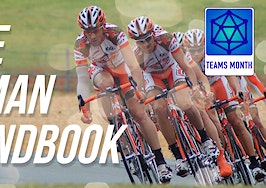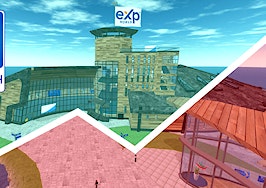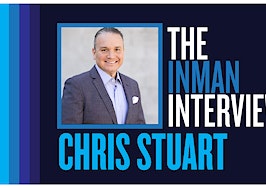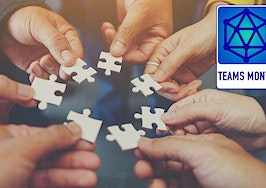 This June, Inman’s editorial theme is Teams — we’re going to go deep on what it takes to grow your team amid this intense seller’s market. And if you’re not already a subscriber to our Teams Beat email newsletter, sent every Thursday, sign up now.
This June, Inman’s editorial theme is Teams — we’re going to go deep on what it takes to grow your team amid this intense seller’s market. And if you’re not already a subscriber to our Teams Beat email newsletter, sent every Thursday, sign up now.
Teams have been on the rise in recent years and many have continued to scale their business, despite the challenges of a pandemic and a fiercely competitive market.
Mega teams, in particular, have made a lot of headlines of late as they’ve grown in popularity and forged new partnerships. There doesn’t really seem to be one unequivocal definition for what a mega team is in the industry, but a few industry experts told Inman that it’s typically a team of about 20 or more agents, and/or a team that yields roughly 1,000 transactions per year. These teams also tend to have really solid branding that’s helped them gain name recognition across the industry.
The mega teams continuing to grow and learn from their previous iterations are doing a lot of things right that agents at any level can learn from.
Inman recently spoke with a few of the country’s top mega team leaders to learn more about the secret sauce behind how mega teams continue to grow. How do they do it, and what are their secrets? Read on for the answers.
Culture
Across the board, the mega team leaders Inman spoke with said it was crucial for a team to clearly identify their values and desired culture before attempting to scale.

Adam Hergenrother Credit: Adam Hergenrother Companies
Adam Hergenrother, of Adam Hergenrother Companies and the 285-agent Hergenrother Realty Group, said that for several years, it felt like his team had “a revolving door,” with low agent retention rates. After company leadership got together and defined what they wanted the company to look like, who they wanted to partner with, and made that clear in their messaging, retention rates started going up. Now, the company has had a 95 percent retention rate for over 18 months.
“But what we’re really looking for is, we’re looking for people who are culturally aligned,” Hergenrother told Inman. “The way I like to refer to this is: 51 percent culture, 49 percent profit, meaning that, we all know that all organizations need money to make them work. But what we like to do is find people that tip the scales with culture, which means that they’re putting the organization first.”
Both Kris Lindahl of the 350-agent Kris Lindahl Team and Dan Beer of the 47-agent Beer Home Team said that, when scaling, any agents the team looks to bring on must clearly fit well within the team’s core value system so that everyone on the team has a shared vision. Beer said his team keeps their values at top of mind by keeping them physically visible in the office.
“We recite [our core values] daily,” Beer said. “They’re up on the wall, they’re visible, they’re visible in our office, but we recite them daily, and we interview to them, most importantly.”

Renee Funk | Credit: eXp Realty
Renee Funk of the Funk Collection at eXp Realty, a 13-agent team, said agents the company looks to recruit to their brand must embody their values of grit and tenacity above other considerations like number of transactions per year or sales volume.
“When we are looking at candidates to join our team, we are looking for grit. We are looking for tenacity. We are looking for desire,” Funk said. “Number of transactions is nice to have an understanding of, it’s not necessary, it’s not a prerequisite to be on our team. The reality is this time we’re facing right now, this environment, this marketplace, the real estate industry quite frankly is one of the most exciting opportunities for agents who are existent of grit and tenacity.”
Data
The 50-agent Figueroa Team at eXp Realty was doing a solid 300 to 400 home sales per year before they “reached a ceiling,” as Team Leader Veronica Figueroa told Inman. Agents were so focused on commission splits and getting their next deal, that the team was having trouble growing any further.

Veronica Figueroa | Credit: eXp Realty
Figueroa decided it was time to make a change. “The vision shifted,” she said, and she decided to make a strategic investment (at somewhat of a risk) by hiring what she saw as a young, talented data analyst with no experience in real estate to help the team get out of its rut.
That former data analyst is Eric Perez, who became her vice president of success and operations, and rapidly rose the ranks to COO of the team within less than one year. Since hiring Perez, the team was able to increase its sales to nearly 800 homes last year, and is now on track to hit 1,200 home sales by the end of this year.

Eric Perez | Credit: eXp Realty
Perez told Inman that knowing how to analyze the team’s data at every step of the process has helped them immediately identify when agents need someone to step in and help them — or when it’s maybe time for them to leave the team because they’re dragging it down.
“Having access to your data, it’s like really knowing your numbers — not just from a transactional standpoint — like, know your appointment rate, your offer rate, your showing rate, all these different levers that help you measure how successful an agent’s going to be throughout the process,” Perez told Inman. “So, if you’re only looking at the backend transaction, not what it takes to build up to that transaction, you don’t really have the knowledge to make any behavioral corrections on the front end of the business.”
Solid operations
Beer said that any team looking to scale must get its operations side on a solid foundation first.
“If you’re really serious about growing a business, you have to have the operations platform first, and then add agents second,” he said. “You cannot expect to bring agents on to a platform that doesn’t even really exist and to hold them together for very long and to have your business mean much for any kind of extended period of time.”

Dan Beer | Credit: eXp Realty
“Any business is built on having a strong operations platform and then adding leads and sales agents to that platform,” he added. “But most agents go about it backwards and start with agents and leads and forget to build out their operations.”
In addition to that advice, Beer added that his team also has quarterly, yearly, three-year and 10-year business plans that the company evaluates on a quarterly basis to make sure they stay on track for their goals.
Hergenrother said that while his company has spent millions of dollars testing out different models over the course of its expansion, the team has really benefited from a duplication model, whereby they replicate their services in every market they expand into.
“Basically, you’d be like Starbucks opening in a new location with the same duplication process so that the experience that the client was getting was the same in either location, it didn’t matter where they were,” Hergenrother said.
In addition, the company takes on all financial responsibility and hiring, so that individual location leaders within the new markets into which they expand can focus their energy on “what they’re really good at,” Hergenrother said. Namely, those location leaders can help train the agents on the ground, negotiate contracts and build relationships with clients.
Lindahl, on the other hand, has developed what he calls an “accountability chart” to guide the team’s operations and growth, which he says keeps staff accountable to duties that need to be completed in order for the business to run smoothly, rather than having one individual’s talents dictate what job functions or services they provide.
“Most leaders inside organizations put people in positions and then draw a box with the duties around that person,” Lindahl said. “And sometimes that person’s the right fit, and sometimes they’re not. What can ensure someone in an organization that they get the right person in the right seat, is they create the box and they put the duties in the box before they put the person there.”
Avoiding shiny objects
New products and technology are a constant in the real estate industry, as every agent knows. Some of those new toys and resources can become very effective business solutions, but when there are so many to choose from, it can be hard to sift through the noise — and it may end up distracting, rather than helping a team leader trying to grow.
“Realtors, in my opinion, are probably one of the most marketed to industries by outside companies and ‘resources’ to sell us their version of solutions and tools and resources,” Funk said. “One of the things we’ve put an incredible amount of focus on for our team, the Funk Collection, is making sure that the solutions and the tools are existing for the agents so that the agents don’t have to worry about falling into the trap of buying that next greatest, latest thing.”
Branding
Most mega team leaders Inman spoke with also said that having strong brand is key to expanding. Without a well-known, reputable brand, it can be very difficult to convince other agents and clients to come on board while trying to grow.
“We decided who we wanted to be as an organization and we got very clear on that and we got our messaging out there,” Hergenrother told Inman. Through developing agent bootcamps, starting up a podcast and writing a book on leadership, Hergenrother said he was able to build his company’s brand into something that people inside and outside of the industry could trust.
“The goal is to be omnipresent,” Beer told Inman. The Beer Home Team recently worked with a professional branding company to be sure its brand was reflected uniformly in all places, whether they were putting a billboard, or promoting the team on Youtube.
“It grows trust,” he added. “When it comes to 95 percent of people out there, they’re not in the market for what we do. But, we make sure they know exactly who we are by the time they are in the market.”

Kris Lindahl | Credit: Kris Lindahl
Lindahl pointed out that creating a solid brand is crucial for both agent and client retention, which are dependent on each other.
“I think that’s the piece that most people struggle with,” Lindahl said. “Is that they don’t ever create a brand. So scaling, going out and hiring agents, is not the hardest thing to do, but if you don’t have any business for them, they’re not going to be there for very long. Having a sustainable brand is critical to keeping people inside the organization.”
Relationships — in and outside of real estate
Networking with other real estate professionals is a big part of staying on top of current trends in the industry. But, Lindahl argued that real estate teams that want to scale should actually look outside of real estate to stay relevant with the consumer.
“There’s this really huge initiative in the industry to collaborate with others that have already created a team or brokerage,” Lindahl said. “And what’s super interesting about that is, everyone’s headed down the wrong path. They’re all headed down more and more real estate, and what they need to be headed after is, what is happening in other industries, what’s happened in the last year to the consumer and getting information outside of our industry because that’s the competition.”
“For me, I want to talk to other executives in other industries and others that are in the service-related business and learn through their challenges of scaling,” he added.
Other team leaders Inman spoke with said that strengthening relationships with their partners and community members has helped position them for growth.
“When I look back at this last year, what I see is, the relationships are stronger,” Funk told Inman. “The relationships we have with our sponsorships, with our charities, with our customers — all of it comes together to say, ‘ok we’re getting through this.’ And the last year of phone calls and connections and video conferences we did to just say, ‘How are you? Are you ok?’ That created a sense of a bond that we’re carrying forward to launch off into really exciting places.”
Just recently signing a three-year partnership with Orlando City Soccer has allowed The Figueroa Team to give back to the community and show the team’s commitment to diversity, Figueroa told Inman.
“It’s probably one of the most popular sports in the world when it comes to countries having [something in common and] bringing cultures together, which is important to us,” Figueroa said. “We continue to make investments that put us in front of the consumer that show that we give back.”
Investments
Investing in a new website with more robust, hyper local content helped The Funk Collection strengthen ties to the community this year, Funk told Inman.
“Doubling down on content and making sure there’s a resource the community can continue to come back [to] for hyperlocal content strengthened the foundation for us as a team and our position within our community,” Funk said.
The team also sponsors Orlando’s NBA team, the Orlando Magic, which is another strategic investment they made in 2019 as the team continued to grow.
Figueroa said some of the team’s strategic investments as they’ve scaled — in addition to their recent partnership with Orlando City Soccer — include recruiting young talent (like Perez), and forming partnerships with Zillow Flex and other big conglomerates.
One of the most important things they’re doing right now though, in the wake of a very successful year, is spending $2 million to invest back into the business on initiatives like a rebrand and a new office hub.
“Some agents are usually like, ‘I made this money, now I’m just going to splurge it all,’ and that’s why they can’t consistently grow,” Figueroa told Inman. “Where, we’re more looking at this as an entity and business and continuing to make those investments to be prepared for the future, which is why I think teams continue to grow because we’re thinking of this like operators, like business owners, not just your traditional agent that wants to brag about being the top producer in their market and drive the fanciest cars and have the fanciest house on the market. We want to create jobs. We really want to build a legacy.”









